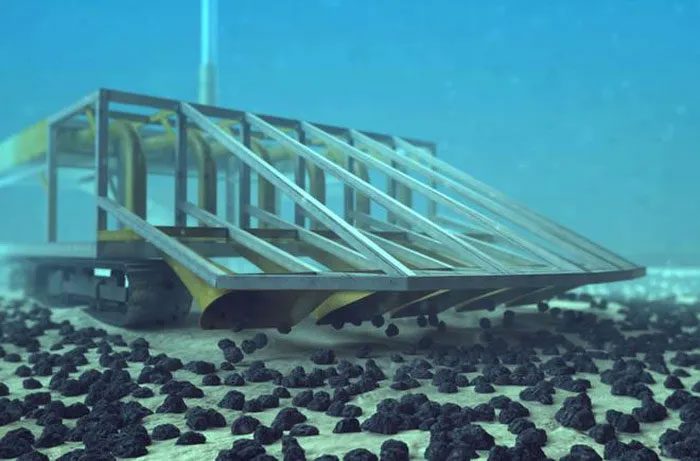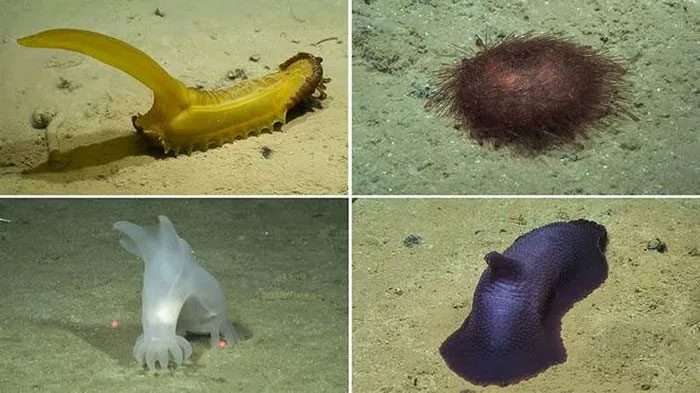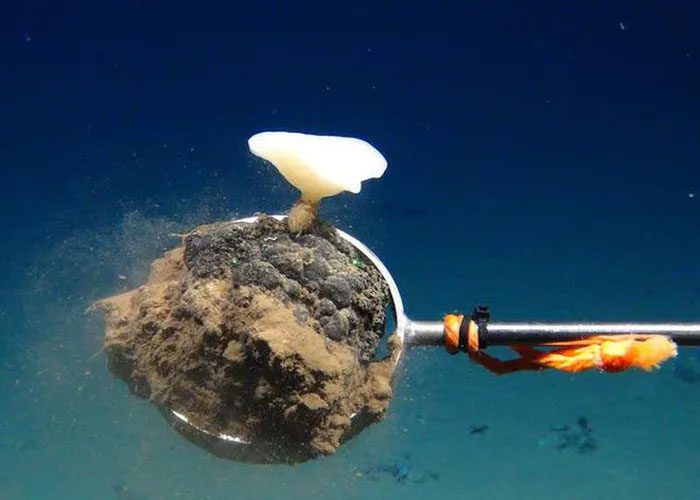In 1972, a young ecologist named Hjalmar Thiel ventured into a remote area of the Pacific known as the Clarion-Clipperton Zone (CCZ). The seabed there boasts one of the world’s largest collections of untapped ‘treasures.’
Giant Treasures Beneath the Sea
Experts were astonished to discover that approximately 4,000 meters below the ocean’s surface, the abyss of the CCZ contains trillions of polymetallic nodules resembling potato-sized lumps, filled with copper, nickel, manganese, and other rare ores.
Hjalmar Thiel was primarily interested in meiofauna—tiny invertebrate animals living on and among the nodules. However, his companions were eager about the wealth of the CCZ and wanted to exploit the valuable ores from the metal-rich mud in the deep waters.
Estimates suggest that the polymetallic nodules in the CCZ—stretching from Hawaii to the Baja California Peninsula—contain more cobalt, manganese, and nickel than all known land-based deposits combined, according to Nature magazine.

Manganese nodules cover the seabed in the Clarion-Clipperton Zone. (Photo: ROV KIEL 6000, GEOMAR (CC BY 4.0) / Nature)
Specifically, according to the assessment by Nature magazine, the CCZ is rich in minerals, with many metals having higher reserves than on land. Specifically:
- The manganese reserves in the CCZ are 5.992 million tons—while the global land-based manganese reserves are 5.220 million tons.
- The copper reserves in the CCZ are about 226 million tons—while the global land-based copper reserves exceed 1,000 million tons.
- The nickel reserves in the CCZ are 274 million tons—compared to just 150 million tons on land.
- The titanium reserves in the CCZ are 67 million tons—while on land they are 899 million tons.
- The rare earth reserves in the CCZ are 15 million tons—while on land they are 150 million tons.
- The cobalt reserves in the CCZ are 44 million tons—compared to just 13 million tons on land.
- The yttrium reserves in the CCZ are 2 million tons—while on land they are only 0.5 million tons.
…And many more metals and rare earth elements.
This marked the beginning of humanity’s journey to explore the seabed and exploit its “natural treasures.”
Half a century later, the dawn of the deep-sea mining industry has arrived. The increasing demand for batteries to power electric vehicles and store wind and solar energy has driven up the prices of many rare metals, creating an urgent demand for deep-sea mining.
In 2019, a startup named DeepGreen in Vancouver, Canada, announced that it was raising $150 million to begin exploring mineral wealth in a part of the Pacific seabed.

Deep-sea creatures collected from the ocean depths in the Clarion-Clipperton Zone. Clockwise from the top left: a sea cucumber known as “gummy bear” (Psychropotes longicauda), a sea urchin, and two sea cucumbers. (Photo: DeepCCZ Project)
The Dark Side of Wealth
The deep sea—often defined as waters deeper than 200 meters—is a world of extremes. Near the seabed, temperatures in many areas hover around 0 degrees Celsius. It is dark, devoid of light, and pressures can exceed 1,000 bars—equivalent to several elephants standing on your toe. Yet, miraculously, life thrives. The deep sea contains a variety of ecosystems that researchers have barely begun to explore.
Such areas are among the quietest, most remote ecosystems on the planet, where fine sediment settles at a rate of about 1 cm every 1,000 years. This low-energy environment is home to polychaete worms, crustaceans, sponges, sea cucumbers, starfish, sea urchins, and many deep-sea fish species, as well as countless microorganisms and small organisms living in the sediments.
Another form of mineral sediment is the metal-rich crust covering ridges, rising thousands of meters above the abyssal plains. These deposits contain valuable metals such as cobalt, platinum, and molybdenum.
A third type of mineral deposit attracting the attention of scientists and miners is the massive sulfides—rich in copper, lead, zinc, gold, and silver. These ores form around hydrothermal vents found along volcanic ridges running through ocean basins.

An image depicting the extraction/harvesting of polymetallic nodules from the seabed.
For many years, it was believed that the first deep-sea environment to be mined would be the hydrothermal vents within the territorial waters of Papua New Guinea. Nautilus Minerals in Toronto, Canada, has pursued that project, but financial difficulties and local opposition have derailed it, making the CCZ the most viable test site for deep-sea mining.
Companies are gradually moving forward with plans to mine the minerals in the CCZ. The International Seabed Authority (ISA)—an organization of 168 member states established by the United Nations to promote and regulate deep-sea mining—has issued 29 exploration licenses to contractors sponsored by various governments over the past decade to explore mineral assets at several deep-sea locations. Of the licenses issued, 16 are for the CCZ, which accounts for about 20% of the total area of the CCZ.
For scientists, since Hjalmar Thiel’s first visit to the CCZ in 1972, they have explored it in much greater detail. Deep-sea biologist Craig Smith at the University of Hawaii in Honolulu (USA) has spent 30 years studying the residents of the CCZ, where he has collected sea cucumbers, sea urchins, soft corals, starfish, anemones, worms, and more. About 90% of the animal species his team collected are new to science or have not yet been described.
Among these are rare species not found anywhere else in the deep sea. Craig Smith believes that even now, scientists have only sampled 0.01% of the total area of the CCZ.
Mining in the CCZ, if it occurs, is still nearly a decade away, with Global Sea Mineral Resources aiming to open a commercial deep-sea mine by 2027.
As miners eagerly seek to exploit the seabed for wealth, scientists are increasingly concerned. When mining in the CCZ begins, the underwater landscape will look like this: Large robotic machines, resembling combine harvesters, will crawl along, picking up polymetallic nodules and sucking up about 10 cm of the soft sediment layer along with them.

An image shows a remotely operated vehicle in the North Pacific Ocean collecting a polymetallic nodule, which has a deep-sea organism growing on top. Its fate is easy to imagine. (Photo: GEOMAR (CC BY 4.0))
Scientists say that because nodules grow very slowly, mining them would effectively remove them permanently from the seabed “in an efficient manner.” The nodules are an irreplaceable habitat for many organisms living in the CCZ.
“For most species in the vicinity, mining would be catastrophic. It would wipe out most large animals and everything attached to the nodules,” says Henko de Stigter, a marine systems scientist at the Royal Netherlands Institute for Sea Research in Texel.
Moreover, the impact of mining in the CCZ will extend far beyond just killing the ecosystem around the nodules. As the collecting machinery moves across the seabed, it will stir up clouds of soft sediment that can stretch for tens of thousands of kilometers. At high densities, sediment plumes can bury and kill deep-sea animals.
The International Seabed Authority (ISA) states that it is listening to scientists and incorporating their assessments to develop regulations for deep-sea mining that balance economic benefits with the conservation of marine habitats. Michael Lodge, the Secretary-General of the ISA, stated, “This is the most thorough preparation we have ever undertaken for any industrial activity.”
Currently, the ISA is persuading 168 member countries to agree on a draft law, which conservationists and scientists hope will require the industry to act responsibly in deep-sea mining.





















































